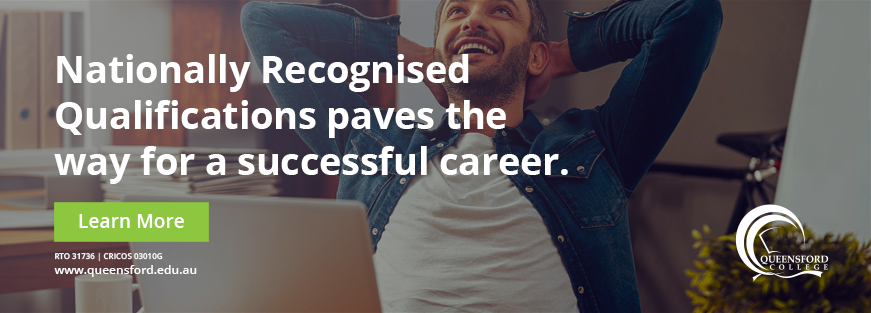It’s natural to be nervous in the lead up of an interview. Everyone feels that way. Like every other applicant you want to wow the interviewer, make a great impression and show them you are the best candidate for the role. But how do you do that? How do you separate yourself from the competition and leave a positive impression on the interviewer?
For individuals interested at improving their interviewing skills, take a look at this step-by-step guide to acing any interview!
Step 1: Analyse the Job
Before you sit your interview, it is a good idea to analyse the job description. Use a highlighter to isolate key aspects or requirements of the job. What exactly is this employer looking for? Is this a senior level job or an entry level job? Identify what skills, knowledge, experience, formal qualifications and employment history the job requires. Do you meet these standards? Try creating a list of these standards. Work your way through this list and put a tick or a cross next to each one. This will help you understand how well matched you are for the role.
Step 2: Identify your Strengths
Now that you have a comprehensive list of all the things the employer is looking for, and how well aligned your skills are, spend some time understanding your key strengths and weaknesses. When it comes to the interview you want to be able to talk up your strengths. For example: If you were a cook being interviewed for a position as a Chef at a restaurant, you would want to talk about the culinary skills you have perfected, how you find inspiration to create new menu’s or your famous signature dish. These things may not come naturally if put on the spot. This is why it is good to review your strengths before the interview.
Any gaps in your skills or knowledge should be addressed. Flagging this issue with the interviewer early on shows them you are an honest and self-aware individual. Explain to the interviewer that although you are well experienced across A, B and C – D might be a little difficult as you have never had experience working within D. Tell the employer you are willingly to work on these weaknesses and are excited to grow and develop professionally.

Step 3: Research the Company
As a candidate you need to understand the basic company facts. Jump online and do a quick Google search. Find out who the company is, when they were established, what they do and what their company values and beliefs are.
You also need to identify the company’s strengths. What do you like about them? What do they do well? In the interview it is a good idea to bring this up and make a positive comment about the company’s progress. However, it is important that you do not waste half your interview rambling on about how much you love the company. This comes across as desperate. You should rely on your incredible skills and knowledge to secure the job, not flattery.
Step 4: Practice Interview Questions
Set aside an hour or so with a family member or friend and get them to ask you practice interview questions! This kind of role play will help you formulate perfect, well-rounded answers in direct response to questions. Practicing your response to interview questions will also help you communicate why you think this role is perfect for you, what sets you apart from other candidates and why you should be considered for this role. This will give you the confidence to enter the interview room with a strong understanding of your own capabilities and strengths. Not to mention, this also decreases the chances of having a mind blank, or completely fumbling your way through a question.

Step 5: What to Wear
It is a good idea to have an ‘interview outfit’ prepared and ready to go in your wardrobe at all times. This way you won’t be scrambling to find an outfit on the day of your interview. Deciding upon this outfit is no easy task. You want to look professional, well-polished and neatly kept. Plus you need to make a great first impression. Formal, conservative attire is highly recommended for both professional and casual workplace environments. Check out these fool proof suggestions below:
Suggestions for Women:
Neat, freshly pressed button up shirt with black dress pants or knee length skirt
Sweater with black dress pants or knee length skirt
Blouse with black dress pants or knee length skirt
Button up shirt with blazer or jacket
Tailored suit (pant or skirt option)
Statement dress with stockings (ensure neckline and hemline are appropriate)
Recommended shoes include a plain black heel or black ballet flats
Pro Tip: Hair should be neatly combed and tucked away in a bun. Little to no Jewellery. Make up should appear neat and not dramatic.
Suggestions for Men:
Neat, freshly pressed button up shirt with dress pants
Black/Grey/Navy suit and tie
Blazers, sports coat or jacket with button up shirt with dress pants
Sweater with button up shirt with dress pants
Bow ties and ties with conservative colours and patterns
Recommended shoes include a black, brown or grey formal shoes and black socks
Pro Tip: Hair should be neatly combed and off the face. Take out any piercings and cover up all tattoos.
Step 6: Where to Go
Before you leave for your interview you must know where you are going! Place the company’s address into an app like Google maps and have your direct route mapped for you. You can select to travel via car or public transport, and Google maps will tell you the fastest way to get there and an estimated time of arrival. It is best to arrive to your interview 10-15 minutes before hand – to avoid running late and to show your potential employer you are punctual. Showing up to your interview late can ruin your chances at securing a job – after all no one wants to be left waiting!

Step 7: What to Bring
It is important to know what to bring to your job interview. What if the interviewer asks for something and you don’t have it? To avoid this extremely awkward moment make sure you bring these following things to the interview:
A copy of your resume
A list of your references
Your portfolio of work
A list of questions for your employer
Pro tip: Avoid bringing these things to interview! It looks very unprofessional. Gum, take-away coffees, your mobile phone.
Step 8: How to Hold Yourself in an Interview
Remember to stay cool, calm and collected. Try not to show how nervous you are by greeting the receptionist and all other staff you come into contact with politely and enthusiastically. Whilst waiting for the interviewer, choose to go over your resume or make conversation with others instead of scrolling through social media on your phone. When you meet the interviewer be sure to shake his or her hand and make eye contact when speaking. Body language is very important when it comes to first impressions. Remember to sit up straight in your chair, keep your feet on the floor and pay attention. You should actively listen to the interviewer to ensure you answer all questions diligently and thoroughly.
Pro Tip: Don’t slump, slouch or slide down your chair, it is disrespectful and might look like you’re uninterested.

Step 9: Ask questions
Remember, an interview is just as much your chance to ask questions as it is the employers! If you have any questions regarding the position like the possibility of re-location, the expectation of over-time or reporting styles – ASK! However, it is best to leave your questions until the end.
Step 10: Send a Follow up Email
This commonly overlooked step is essential. After your interview, send a short follow up email thanking them for their time. You might also want to include restating why you want the job, what your qualifications are how you can make valuable contributions to the organisations growth or revenue income. For example:
“Dear XXX,
Thank you for your time this morning – I really appreciate it. I would love to work alongside yourself and the several other talented sous chefs in the Blue Finn Restaurant and Bar. Cooking with seafood has always been my passion, and learning how to fish from the age of 3 years old has taught me a great deal of appreciation for freshly sourced food.
I look forward to hearing from you!
Kind Regards,
[Your name]

